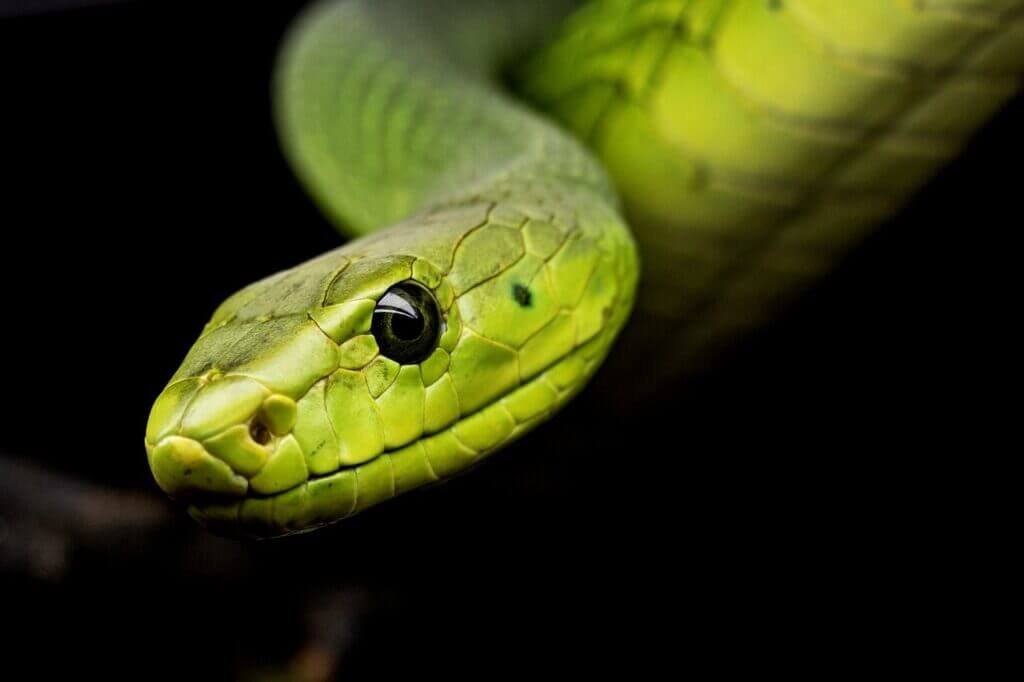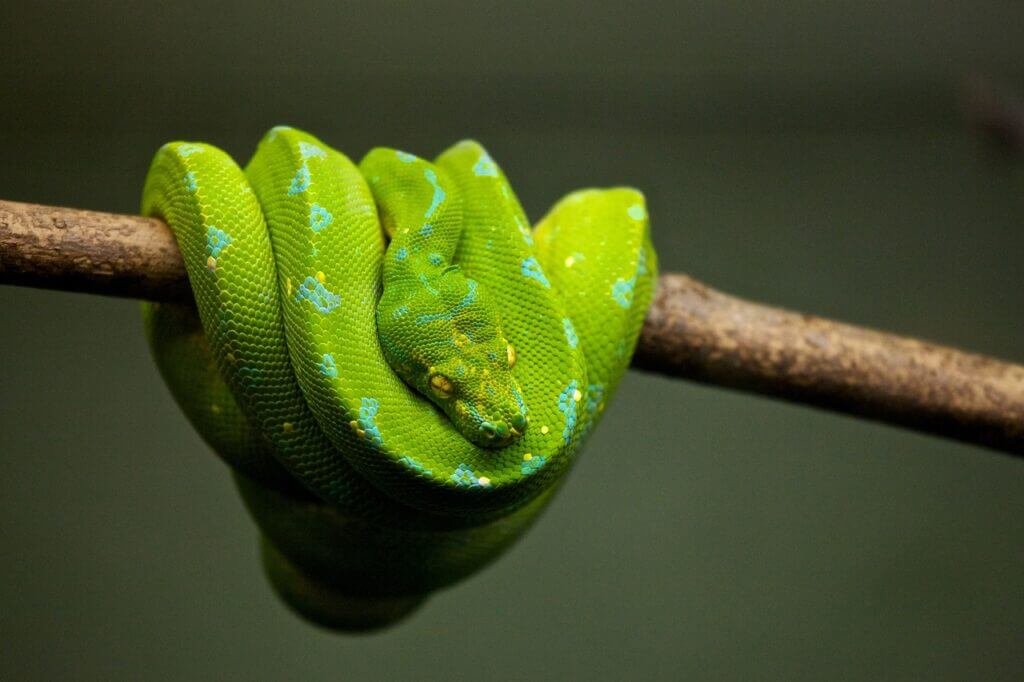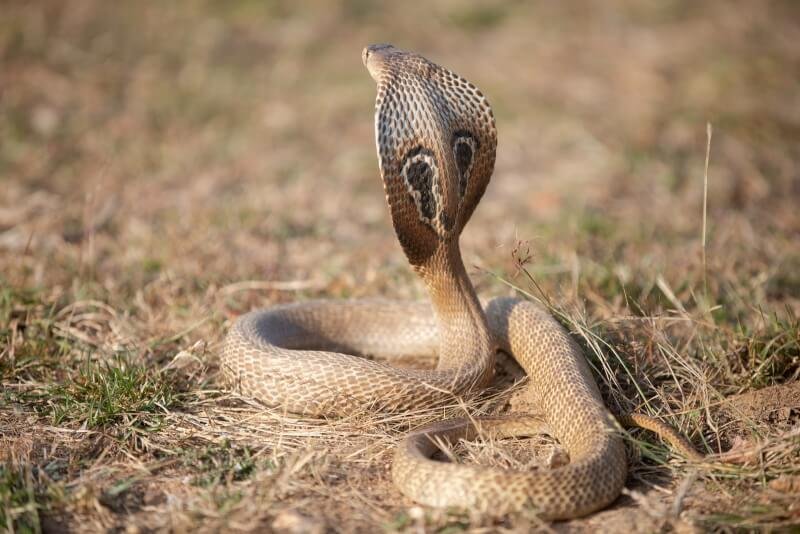Hey, snake enthusiasts! Are you ready to embark on a thrilling journey through the mysterious world of venomous snakes? Get ready to uncover the dangerous secrets lurking within the shadows as we delve into the question that has been on the minds of many curious adventurers: What are the most venomous snakes in the world? Brace yourself for a wild ride as we navigate through the deadly landscapes inhabited by these slithering creatures, revealing the spine-chilling contenders for the title of the most venomous snakes on our planet. So grab your gear, put on your brave face, and let’s explore the captivating world of venom with an up-close and personal encounter with these lethal creatures.

Snake Venom
Introduction to Snake Venom
Snake venom is a complex mixture of proteins, peptides, enzymes, and other bioactive molecules that are produced by venomous snakes. These highly specialized secretions play a crucial role in capturing prey, defense against predators, and even species communication. While the primary purpose of venom is to immobilize or kill prey, it poses a significant threat to humans as well. Understanding the composition and potency of snake venom is essential for developing effective antivenoms and improving snakebite treatment.
Composition of Snake Venom
Snake venom is composed of various components, including enzymes, toxins, and non-toxic proteins. Enzymes such as phospholipases, metalloproteinases, and hyaluronidases are responsible for breaking down cell membranes, causing tissue damage and promoting the spread of venom in the body. Toxins, on the other hand, target specific physiological processes, such as blood clotting or neuromuscular function, leading to paralysis or other lethal effects.
Non-toxic proteins present in snake venom serve different purposes, such as aiding in the transport and stability of venom components, modulating the immune response of prey or victims, and facilitating venom delivery. These proteins can also serve as potential tools for medical research, as they may have therapeutic properties or insights into cellular signaling pathways.
Types of Snake Venom
Snake venoms are classified into several categories based on their effects on the human body. The four main types of snake venom are neurotoxic, cytotoxic, hemotoxic, and coagulotoxic. Neurotoxic venom affects the nervous system, leading to paralysis and respiratory failure. Cytotoxic venom primarily damages cells and tissues, causing necrosis and severe pain at the bite site. Hemotoxic venom affects the circulatory system, disrupting blood clotting and potentially leading to internal bleeding. Coagulotoxic venom also interferes with blood clotting, but in a different manner, resulting in a coagulopathy.
Different snake species produce venom with varying combinations and concentrations of these venom types, which can have profound implications for the severity of envenomation and the appropriate treatment required.
Methods to Measure Venom Potency
LD50 Test
The LD50 test is a widely used method for measuring venom potency. LD50 stands for “lethal dose 50,” which represents the dose of venom required to kill 50% of a test population of animals, typically mice. In this test, a range of venom doses is administered to a group of animals, and the response, usually mortality, is recorded. The LD50 value is then calculated by determining the dose that kills exactly half of the animals. However, ethical concerns and the availability of alternative methods have led to a decrease in the use of this test in recent years.
Bradford Assay
The Bradford assay is a biochemical method used to measure the protein concentration in snake venom. By using a colorimetric reaction with Coomassie Brilliant Blue dye, the assay allows for the quantification of protein content in a sample. This information is valuable in determining the potency of venom, as proteins are often the main active components responsible for the venom’s effects. The Bradford assay provides a quick and reliable means of comparing venom samples and assessing their protein concentrations.
Hemorrhagic Analysis
Hemorrhagic analysis is a method used to assess the hemorrhagic potential of snake venom. It involves injecting small amounts of venom into laboratory animals and observing the development of hemorrhagic lesions. The severity of the hemorrhage is then scored, providing an indication of the venom’s ability to cause tissue damage and bleeding. This test helps researchers understand the pathophysiological effects of venom and provides valuable insight into its potency.
Mouse Intracerebroventricular Test
The mouse intracerebroventricular test is a technique used to evaluate the neurotoxic potential of snake venom. In this test, venom is injected directly into the cerebral ventricles of mice, targeting the central nervous system. The observed effects, such as paralysis or convulsions, reflect the neurotoxicity of the venom. This test helps in identifying the potency of neurotoxic venoms and understanding their mechanism of action.

Factors Affecting Venom Potency
Species Variation
The potency of venom can vary significantly between snake species. Each species has evolved unique venom components to suit its ecological niche, taking into account factors such as prey type, habitat, and hunting strategies. Therefore, it is expected that venom potency will differ even within the same family or genus of snakes. For example, some species that belong to the same genus may have venom with distinct toxic effects, targeting different physiological systems. Understanding these variations is crucial for snakebite treatment and antivenom production.
Snake’s Age
Venom potency can also be influenced by the snake’s age. As snakes mature, changes in their venom composition and toxin expression may occur. Juvenile snakes may possess less potent venom or even lack certain toxins that are present in the venom of adult snakes. Additionally, the snake’s diet and environmental factors can further influence venom composition and potency. The age-related variations in venom potency highlight the importance of considering the snake’s life stage when assessing its potential danger.
Geographical Location
The geographical location of snakes can have a significant impact on venom potency. Snakes living in different regions may encounter distinct prey species and environmental conditions, leading to adaptations in their venom. For example, snakes living in areas with high biodiversity and large prey may have more potent venom to subdue their prey efficiently. In contrast, snakes in areas with fewer resources may have venom that is less potent. Therefore, the location where a snake is found can provide useful information about the potential danger it poses.
Inland Taipan
Overview of Inland Taipan
The inland taipan (Oxyuranus microlepidotus), also known as the “fierce snake,” is considered the most venomous land snake in the world. This highly dangerous snake is native to central Australia and is known for its potent venom, excellent camouflage, and shy nature. Despite its reputation, encounters with the inland taipan are rare due to its remote habitat and low population density.
Venom Potency
The venom of the inland taipan is incredibly potent, containing a high concentration of neurotoxins. It is estimated that a single bite from this snake could deliver enough venom to kill approximately 100 adult humans. The neurotoxins target the nervous system, leading to paralysis and, if left untreated, respiratory failure. The potency of its venom highlights the importance of immediate medical attention in case of a bite.
Toxicity Symptoms
When envenomated by an inland taipan bite, individuals may experience a range of symptoms. These can include local pain and swelling at the bite site, headache, nausea, vomiting, dizziness, and difficulty breathing. Without prompt antivenom treatment, the symptoms may progress to paralysis, respiratory distress, and ultimately death.
Distribution and Habitat
The inland taipan inhabits semi-arid regions of central Australia, including the states of Queensland, South Australia, and the Northern Territory. It prefers sparsely vegetated areas, such as grasslands, shrublands, and mulga woodlands. Its excellent camouflage and elusive behavior make it challenging to spot in its natural habitat.
Protection and Conservation Status
The inland taipan is protected under various conservation laws in Australia, including state legislation and international agreements. Its conservation status is currently listed as “Least Concern” due to its remote and sparsely populated habitat. However, ongoing efforts are being made to preserve its natural habitat and ensure its long-term survival.

Eastern Brown Snake
Overview of Eastern Brown Snake
The eastern brown snake (Pseudonaja textilis) is a highly venomous snake native to Australia. It is known for its aggressive behavior and frequent encounters with humans. This snake is responsible for a significant number of snakebite-related deaths in the region.
Venom Potency
The venom of the eastern brown snake is highly potent and primarily neurotoxic. It contains powerful procoagulant toxins that affect blood clotting and can lead to systemic bleeding. While the volume of venom injected in a bite is usually smaller compared to other venomous snakes, the potency of the venom necessitates immediate medical attention.
Toxicity Symptoms
Envenomation by an eastern brown snake bite can lead to various symptoms. These include severe local pain, swelling, and bruising at the bite site. Other systemic symptoms may include headache, dizziness, nausea, vomiting, abdominal pain, and bleeding from different body parts. In severe cases, envenomation can result in cardiovascular collapse and death if not treated promptly.
Distribution and Habitat
The eastern brown snake is found across most of eastern and central Australia, including New South Wales, Queensland, South Australia, Victoria, and the Northern Territory. It can occur in a wide range of habitats, including grasslands, woodlands, forests, and urban areas. It is frequently encountered in residential areas, making it a significant concern for public safety.
Protection and Conservation Status
The eastern brown snake is not listed as a protected species in Australia, but it is recognized as highly venomous and potentially dangerous to humans. Awareness campaigns, education programs, and snakebite management initiatives aim to reduce the risks associated with encounters and improve snakebite treatment outcomes.
Black Mamba
Overview of Black Mamba
The black mamba (Dendroaspis polylepis) is one of Africa’s most feared snakes and is widely regarded as one of the world’s deadliest. Named for its black mouth rather than its body color, the black mamba is known for its incredible speed and highly toxic venom.
Venom Potency
The venom of the black mamba is extremely potent, primarily consisting of neurotoxic proteins and cardiotoxins. It acts on the nervous system, causing paralysis, respiratory failure, and ultimately death if left untreated. A single bite from a black mamba can deliver a large amount of venom, making it highly dangerous.
Toxicity Symptoms
When bitten by a black mamba, individuals may experience rapid onset of symptoms. These can include local pain, swelling, and discoloration at the bite site, followed by systemic effects such as headache, blurred vision, dizziness, nausea, and difficulty breathing. Without prompt medical intervention, envenomation can lead to cardiac arrest and death.
Distribution and Habitat
The black mamba is found in sub-Saharan Africa, ranging from southern regions like South Africa and Mozambique to eastern regions like Kenya and Tanzania. It inhabits a variety of habitats, including savannas, woodlands, and rocky areas. Despite its reputation, the black mamba is shy and rarely confronts humans unless threatened.
Protection and Conservation Status
The black mamba is not listed as a protected species, but it is recognized as a valuable part of the ecosystem and is protected in some national parks and reserves. However, habitat loss, poaching, and illegal wildlife trade continue to pose threats to its conservation status.
Tiger Snake
Overview of Tiger Snake
The tiger snake (Notechis scutatus) is a venomous snake species native to Australia. It is known for its striking pattern and is named after the tiger-like stripes along its body. Tiger snakes are highly venomous and can deliver a potent bite.
Venom Potency
The venom of the tiger snake is a complex mixture of neurotoxic, cytotoxic, and hemotoxic components. The combination of these toxins makes the venom highly lethal. When envenomated, the venom can cause muscle paralysis, impair blood clotting, and damage tissues, leading to severe health complications if not treated promptly.
Toxicity Symptoms
Envenomation by a tiger snake bite can produce a range of symptoms. These may include local pain, swelling, and discoloration at the bite site. Systemic symptoms can include headache, nausea, vomiting, abdominal pain, muscle weakness, and difficulty breathing. Without appropriate medical intervention, tiger snake bites can be fatal.
Distribution and Habitat
The tiger snake is found in various habitats across southern Australia, including coastal areas, wetlands, grasslands, and forests. It is a versatile species that can adapt to a range of environments, from urban areas to remote regions. Its adaptability and close proximity to human settlements contribute to the risk of encounters with humans.
Protection and Conservation Status
The tiger snake is not listed as a protected species in Australia. However, like other venomous snakes, it is crucial to maintain public awareness and education regarding its presence and potential dangers. Conservation efforts focus on preserving its natural habitats and preventing human-wildlife conflicts.
Russell’s Viper
Overview of Russell’s Viper
Russell’s viper (Daboia russelii) is a highly venomous pit viper found in Asia, particularly in India and Southeast Asia. It is named after Scottish herpetologist Patrick Russell, who first described the snake in the late 18th century. This viper is responsible for a significant number of snakebite incidents in its range.
Venom Potency
The venom of Russell’s viper is complex and contains a combination of different toxins, including neurotoxins, hemotoxins, and coagulants. This diversity of toxins makes its venom highly potent. Once envenomated, the venom can cause a cascade of effects such as severe bleeding, tissue damage, and disruption of blood clotting.
Toxicity Symptoms
When bitten by a Russell’s viper, individuals may experience immediate local pain, swelling, and bruising at the bite site. Systemic symptoms can manifest within hours and include severe bleeding from various orifices, gastrointestinal disturbances, kidney damage, and cardiovascular complications. Without timely medical treatment, these symptoms can be life-threatening.
Distribution and Habitat
Russell’s viper can be found in a wide range of habitats, including grasslands, forests, cultivated areas, and human settlements. It is native to countries like India, Pakistan, Nepal, Sri Lanka, Bangladesh, and Myanmar. Its adaptability to different habitats and close proximity to people contribute to the snakebite incidents involving this species.
Protection and Conservation Status
Russell’s viper is not listed as a protected species but is recognized as a medically important snake due to its widespread occurrence and venom potency. Conservation efforts aim to promote awareness, prevent snakebite incidents, and ensure access to effective antivenom treatments in regions where this snake is prevalent.
Saw-scaled Viper
Overview of Saw-scaled Viper
The saw-scaled viper (Echis carinatus) is a venomous species found in the dry regions of Africa, the Middle East, and the Indian subcontinent. Named after the distinctive saw-like scales on its tail, this viper is known for its aggressive nature and potent venom.
Venom Potency
The venom of the saw-scaled viper is highly toxic and predominantly hemotoxic. The venom contains various enzymes and toxins that disrupt blood clotting and can lead to serious bleeding disorders in envenomated individuals. The venom’s potency and the viper’s aggressive behavior make it a significant health concern in regions where it is found.
Toxicity Symptoms
Envenomation by a saw-scaled viper bite can result in a range of symptoms. These may include immediate local pain, swelling, and bleeding at the bite site. Systemic symptoms can include nausea, vomiting, abdominal pain, dizziness, hemorrhage, and renal failure. Without timely medical intervention, saw-scaled viper bites can be fatal.
Distribution and Habitat
The saw-scaled viper has a wide distribution, found in arid and semi-arid regions across Africa, the Middle East, and the Indian subcontinent. It can inhabit a variety of habitats, including deserts, rocky areas, scrublands, and agricultural fields. Its ability to blend in with the environment and its nocturnal behavior make encounters with humans more likely.
Protection and Conservation Status
The saw-scaled viper is not listed as a protected species but is recognized as a potential threat to public health. Educating local communities, healthcare providers, and promoting the availability of antivenom treatments are crucial in minimizing the impact of saw-scaled viper bites and improving treatment outcomes.
Common Death Adder
Overview of Common Death Adder
The common death adder (Acanthophis antarcticus) is a venomous snake native to Australia and is known for its camouflaged appearance and deadly prey ambush technique. Despite its name, encounters with this snake are relatively rare, as it prefers to remain hidden and avoid confrontations.
Venom Potency
The venom of the common death adder is potent and contains both neurotoxic and myotoxic components. The neurotoxins primarily target the central nervous system, leading to paralysis and respiratory failure. Myotoxins, on the other hand, cause muscle damage and breakdown. These combined effects make the common death adder’s venom highly dangerous.
Toxicity Symptoms
Envenomation by a common death adder bite can result in various symptoms. These can include local pain, swelling, and discoloration at the bite site. Systemic symptoms may manifest as headache, dizziness, blurred vision, weakness, paralysis, and difficulty breathing. Without prompt medical attention, the bite can lead to respiratory arrest and potentially death.
Distribution and Habitat
The common death adder is found in various habitats across Australia, including forests, woodlands, grasslands, and coastal areas. It is particularly prevalent in the northern and eastern regions of the country. The snake’s ability to blend in with its surroundings, coupled with its ambush hunting strategy, makes it a formidable predator.
Protection and Conservation Status
The common death adder is not listed as a protected species in Australia. However, public education and promotion of snakebite awareness are important in minimizing the risks associated with encounters. Conservation efforts focus on preserving its natural habitats and ensuring the long-term survival of this unique species.
In conclusion, snake venom is a fascinating and dangerous aspect of the natural world. Understanding the composition, potency, and effects of snake venom is crucial for effective snakebite treatment, development of antivenoms, and conservation efforts. The knowledge gained from studying the most venomous snakes in the world, such as the inland taipan, eastern brown snake, black mamba, tiger snake, Russell’s viper, saw-scaled viper, and common death adder, plays a vital role in mitigating the risks associated with these venomous creatures. By raising awareness, promoting conservation, and advancing research, we can better protect both humans and snakes in their shared environments.


